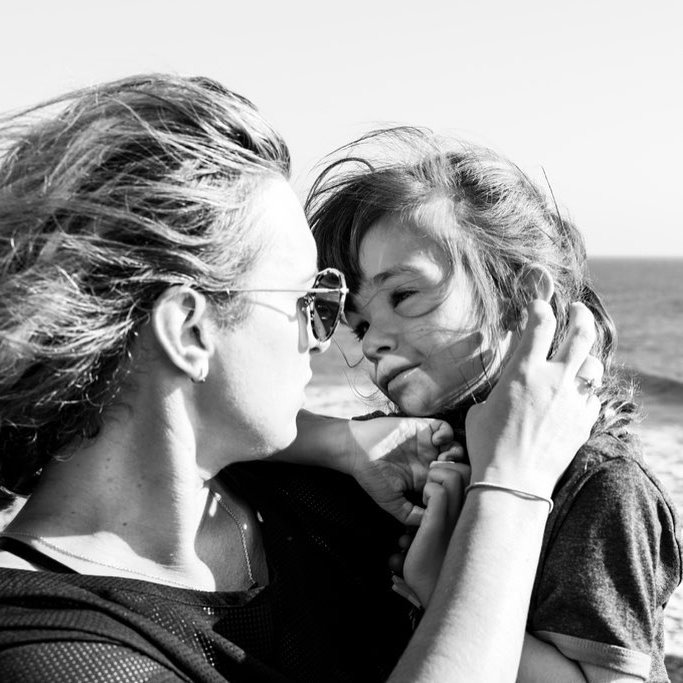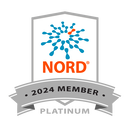|
Have you ever wondered what TCSF is? Where did it come from and who started it? With so many new faces in the community it was time to catch up with The Cute Syndrome’s Founder/Director, Hillary Savoie, as she talks about the foundation and life as a special needs parent. -Heather Crowley Q: Can you tell me a little about yourself? A: I’m Hillary Savoie. I live in upstate NY, near Albany. I’m the founder and director of The Cute Syndrome Foundation (TCSF). I’m also an occasional writer and I have a doctorate in Communication and Rhetoric. More importantly I am mom to Esmé--a super cute, funny, smart nearly-ten-year-old girl who has multiple genetic mutations (in order of discovery): PCDH19, SCN8A, TBL1XR1, and MAP3K7. Q: Where does the name “The Cute Syndrome” come from? A: The term “The Cute Syndrome” came from a conversation with my friend Dana when Esmé was a newborn. I told Dana that the doctors had said that she likely had some kind of syndrome, and Dana responded, “yeah, she has a syndrome--she has the Cute syndrome. I mean, look at her!” As Esmé grew, and her disabilities became more and more visible, people would often ask me what she “had” or, more insensitively, what was “wrong” with her. I found the questions frustrating for all kinds of reasons--not the least of which was that those kinds of questions sometimes felt rude, invasive, and exhausting, especially since we still didn’t have a diagnosis, despite the best efforts of a number of doctors. So, when I could muster it, I would just smile and say, “Oh, she has the Cute syndrome, can’t you tell? Obviously she’s the cutest kid ever!” When I started blogging about Esmé, I named the blog The Cute Syndrome. And when I started the foundation, it seemed the natural name. Over time, due to TCSF’s work in SCN8A, The Cute Syndrome has become a synonym for SCN8A in some circles. I found that difficult at first--because, as far as I was concerned, Esmé was the only person with the Cute syndrome. It was invented for her, but once I saw how meaningful the name was for the SCN8A community, I was just happy to know that we were able to share. We just occasionally remind people that Esmé is The Cute or The Original Cute! Q: When and why did you decide to start a non profit for SCN8A?
A: Well, TCSF originally focused on PCDH19, the first mutation of Esmé’s that we were told about. However, Esmé did not clearly fit the phenotype of PCDH19, so we left the mission open to be able to support other communities. When Esmé’s SCN8A mutation was found in 2015, we found a community that seemed a whole lot like Esmé. They were facing very similar challenges and although we knew quite soon that Esmé’s SCN8A mutation was unlikely to be pathogenic, I had fallen in love with this community...and, just like that, we were family. Q: How has your goals changed for the foundation over the years? A: Honestly, when I started TCSF, my goals were quite simple: I wanted to share Esmé’s story--both the challenges and the beautiful moments--as a way to help raise awareness. I thought I might be able to raise a little bit of money to help support research. My initial goal was $10,000 to help support one grant. That year we raised nearly $64,000. By the end of this year we are projected to have raised $600,000 over the seven years we have been a foundation. We will have funded 10 grants for rare genetic epilepsy clinical and bench research and held seven meetings for clinicians, researchers, industry partners, and families. Q: What is your greatest achievement for TCSF so far? A: Well, it really isn’t one thing so much as it is an environment. There are two pieces to this: First, we have set a standard for how we talk about our children. I believe that we can both want to help our children be healthier and safer through medical advances AND see them as absolutely perfect as they are. In fact, I believe that is the only way to help our children...because they are amazing, every single one of them, as they are. And our job is to help them have more chances to safely be all of what is extraordinary about them. Creating an environment for celebrating our children and what we know about them is absolutely key, in my opinion, for moving forward to help our children from a position of hope. Additionally, we are, all of us, as caregivers of medically complex children, scientists, medical professionals, and advocates--we are part of the key to understanding how to advance treatments for our children. TCSF has always wanted to support families *at the table* with clinicians, researchers, and industry partners. We have never seen the model for advocacy of having meetings behind closed doors and reporting back to families--it has always been based on what families need and want to share about their experiences. This is most clear in our annual meeting when we have families tell their stories alongside medical and scientific professionals, while our children are in the room, making noise, playing, crying, and sometimes seizing...and without a doubt, every year, we hear again and again from these professionals that it is this part of the event that sticks with them--that drives them to continue their work and that provides insight they would not otherwise have. Q: How do you balance being a medically complex parent and running an organization? A: Not always well. I am tired a lot...and I know Esmé might hate the foundation sometimes. In fact, I have asked her to do a message for the upcoming Gathering and I am a bit afraid of what she might say. But I do tell her often that she is a very lucky girl--that she has had access to the best medical and therapeutic care we could ever hope for...and that just by being herself and letting me tell others about her, she is helping other children who might not be so lucky. At the end of the day, though, I know I am not doing any of this to help Esmé--because none of it will. The science we fund, the drugs in the pipeline for SCN8A, they won’t be answers for her. Sometimes that is a challenge, I’ll admit. But at the end of the day, the SCN8A community is our family...and we all do what we can for our family. Q: What are ways people can get involved? A: There are several ways for you to get involved with the foundation. We cannot do what we do without funding, so we certainly welcome donations to TCSF. You can make a donation here: https://www.thecutesyndrome.com/donate.html. We wouldn’t be able to operate without volunteers. There are a wide variety of projects and events throughout the year and it takes a lot of people to help these efforts run smoothly. If you are interested in volunteering for TCSF, you can reach out to Karen Varner at [email protected]. Last but not least, you can help by spreading awareness. Follow us on Facebook, Instagram, and the blog. Share our stories. Tell others why SCN8A and TCSF are important to you. Encourage them to get involved! The more people know about us, the better we can reach the people who need us most!
1 Comment
Elinor Nosker
2/10/2023 10:23:20 am
Your FB post made it into my morning awareness. I just learned that my MTHFR genetic variant was the cause of my growing health problems over the years. I'm in Saugerties, NY - south of Albany, NY but my heart is there with you and your daughter. My multiple chemical sensitivities and subsequent reactions drain my energy to the point that I've had to restrict getting out anywhere. Challenges were more noticed by me than any acquaintances or doctors. Take care of yourself while taking care of your daughter. Delegate if and when possible to take care of your own health and down time please? My own mother had the time and motivation to help with a young boy with cerebral palsy so his mother had more free time years ago. My heart is in that, but my body just isn't as agreeable presently. Hugs to you and to your daughter in the meantime. EGN
Reply
Leave a Reply. |
Archives
May 2024
Categories
All
|
|
Past Annual Reports
Past PCDH19 Efforts Privacy Policy The Cute Syndrome Foundation PO Box 842 Ozark, MO 65721 |
The Cute Syndrome is registered as a tax-exempt organization under IRS section 501(c)(3).
Our tax identification number is: 46-2699066. © The Cute Syndrome Foundation, All rights reserved |



 RSS Feed
RSS Feed


